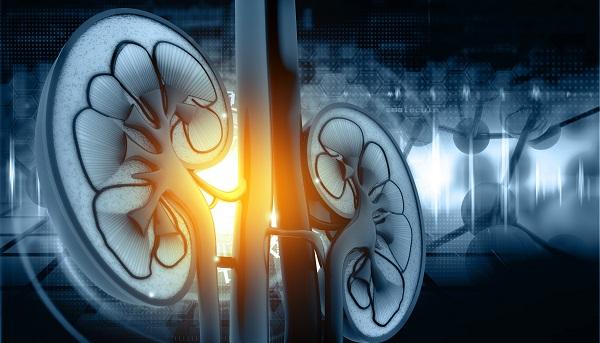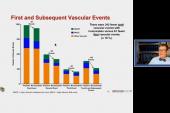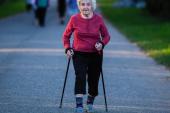Rivaroxaban Safe, Effective in Renal Disease: VOYAGER PAD
The CV and limb benefits of rivaroxaban therapy were preserved across the eGFR spectrum, without an excess of bleeding events.

In PAD patients with chronic kidney disease who’ve undergone revascularization, rivaroxaban (Xarelto; Bayer/Janssen) can safely reduce major CV and limb events, new findings from the VOYAGER PAD trial suggest.
The main VOYAGER PAD results demonstrated that rivaroxaban 2.5 mg twice daily added to 100 mg of aspirin reduced the incidence of acute limb ischemia compared with aspirin alone, with the difference being apparent as early as 3 months after randomization. Since renal impairment is common among PAD patients and can increase blood levels of rivaroxaban, the trial investigators sought to assess whether the benefit of the therapy in this patient population outweighed any major increase in bleeding, said lead author Judith Hsia, MD (University of Colorado School of Medicine, Aurora).
“We found the efficacy is preserved in people with chronic kidney disease and actually there is an increase in the protection against limb endpoints—that is, major amputation and acute ischemia. The worse your kidney function is, the more protection you get from rivaroxaban against limb events,” she told TCTMD.
“As far as the bleeding, there was no statistical difference in major bleeding and there were no events of intracerebral hemorrhage or fatal bleeding in the patients with kidney disease,” Hsia added.
Weighing Risks and Benefits
For the new VOYAGER PAD analysis, published as a research letter in the Journal of the American College of Cardiology, Hsia and colleagues looked at estimated glomerular filtration rate (eGFR) in the 6,564-patient study. In all, 6.6% had eGFR < 45 mL/min/1.73 m2 and 14.4% had eGFR 45 to 59 mL/min/1.73 m2, with the remainder having eGFR of ≥ 60 mL/min/1.73 m2. Patients with poorer renal function were typically older, more often female, and more likely to have hypertension, diabetes, or hyperlipidemia.
Overall, the primary endpoint of MI, ischemic stroke, CV death, acute limb ischemia, and major amputation was reduced in comparison with aspirin alone across all eGFR categories, driven by a reduction in major limb events (P = 0.90).
Risk of the Primary Endpoint by eGFR Category
|
|
HR |
95% CI |
|
< 45 mL/min/1.73 m2 |
0.49 |
0.21-1.06 |
|
45-59 mL/min/1.73 m2 |
0.59 |
0.35-1.02 |
|
≥ 60 mL/min/1.73 m2 |
0.77 |
0.64-0.94 |
The gap in TIMI major bleeding events between rivaroxaban and placebo was larger in the lowest eGFR group (HR 3.32) and smaller in the other two groups (HR 1.41 and 1.27, respectively), but with few total events, the study’s power to assess true bleeding risk by eGFR level was limited.
“If one looks at the number of patients you need to treat to prevent a heart attack, stroke, death, or limb event, it's nine patients needed to be treated for 1 year to prevent a major event, whereas the number of patients you would need to treat in order to cause a major bleed is 57,” Hsia explained. “What the analysis does is provide information so that interventionalists, whether they're cardiologists or vascular surgeons or interventional radiologists, can have informed conversations with their patients who have kidney disease about whether or not rivaroxaban is going to be a good choice for them.”
Asked how she would handle a patient with an eGFR value under 45 mL/min/1.73 m2, Hsia said while levels under 16 mL/min/1.73 m2 cannot be considered for rivaroxaban treatment at all, those with values between 16 and 45 mL/min/1.73 m2 require careful, individual decision-making and follow-up.
“There may be an increased risk of bleeding, although that was not specifically seen, but there was a clear benefit as far as prevention of major cardiovascular and limb events,” she added. “These [chronic kidney disease] patients are hopefully a population that can benefit from this therapy along with the other subgroups as our prior data have shown.”
L.A. McKeown is a Senior Medical Journalist for TCTMD, the Section Editor of CV Team Forum, and Senior Medical…
Read Full BioSources
Hsia J, Szarek M, Anand S, et al. Rivaroxaban in patients with recent peripheral artery revascularization and renal impairment: the VOYAGER PAD trial. J Am Coll Cardiol. 2021;78:757-759.
Disclosures
- The VOYAGER PAD trial was supported by a grant from Bayer AG and Janssen.
- Hsia reports owning stock in AstraZeneca; and has received grant support from Amgen, AstraZeneca, and Janssen.





Comments